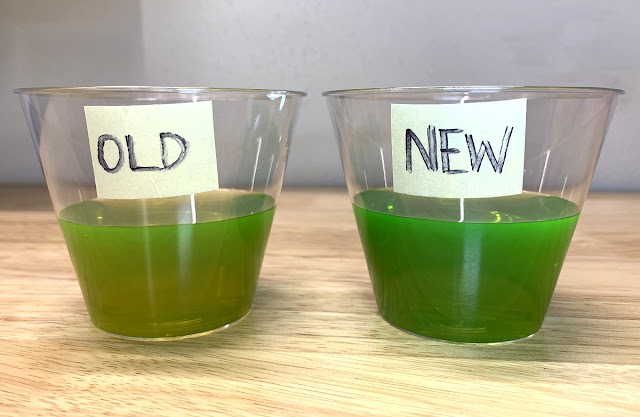Since my Corvette's Water Temp gauge needle has been getting too close to the redline for my comfort, I've been trying to determine what may be causing the issue.
I do not believe the gauge itself is to blame, but that's a topic for another discussion. For now, I want to stick to the subject matter of flushing my Corvette's radiator.
The task is not difficult per se, but you will need to lift the front of your Vette to reach the radiator's drain plug or petcock.
My car originally had a petcock with a reverse-thread wing nut type of drain valve that was part of the plug. Since the wingnut interfered with one of the bottom radiator core support brackets, the guy who installed the new radiator felt the only solution was to bend them out of the way. It worked, but it looked horrible.
Anyway, I am not sure about the need for such a drain valve. After all, if you want to drain the radiator quickly and properly, the best solution is to simply remove the plug. So I went to ACE Hardware and bought an NPT-threaded brass plug.
After emptying the radiator and whatever I was able to remove from the engine block at the same time, I plugged it again to start the flushing. And even though it is an NPT-threaded (tapered) plug, I used Teflon tape to ensure it would be leak-free.
For the flushing procedure, I bought a radiator flush off the shelf at the local Walmart since it was cheaper than the same product sold at nearby auto parts stores.
It is important to read and follow all of the use instructions on the label as you want to ensure you perform the flush correctly.
After the initial flush, I rinsed the system an additional two times to remove as many traces of the cleaner as possible. For this step, I simply used tap water since I feel it is a waste to use distilled water for this purpose, but that's your call if you decide to flush your radiator.
It is important to mention that during every flush (and the same applies to the rinsing process), you have to bring the engine to operating temperature.
This means the cooling system will be pressurized and you have to allow the engine to cool off enough to avoid injury. I planned my work so I would allow it to cool down overnight and that schedule worked great for me.
The important thing to remember is not to rush the process.
With the flushing and rinsing steps completed, I refilled the cooling system with green coolant which is the recommended type for my engine, reinstalled the radiator cap, and started the car.
I also burped the cooling system and kept refilling the radiator until it was completely full. I posted a blog article and a YouTube video of the burping steps in case you'd like to review them.
I would like to emphasize that a radiator flush is not a difficult job, but it can be messy and it is certainly dangerous since you would be working near a running engine. If you are not comfortable with this scenario, it is best to let a professional mechanic handle the task.
Also, a shop will have a tank where they recycle hazardous chemicals since they are required by local ordinances to do so.
DISPOSING OF ANTIFREEZE/COOLANT
If like me, you decide to flush your Corvette's cooling system, you will end up with several gallons of nasty chemicals. Therefore it's a good idea to save and reuse all the bottles your fresh antifreeze/coolant came in.
I used the Spillproof funnel to refill the bottles, which was very convenient.
These products are dangerous to humans, animals, and our environment, so don't even think about dumping used engine antifreeze/coolant down the drain or in your backyard. Absolutely not! Be a responsible do-it-yourselfer and take it to a place that recycles household chemicals.
You can search online or find a local recycling center near you by visiting Earth911 and entering your zip code. Alternatively, some automotive shops with recycling tanks may let you dispose of your used coolant as a favor, but don't count on it since they pay for the service. Auto parts stores accept used motor oil but DO NOT accept antifreeze-coolant since it is considered a hazardous chemical.
I found a recycling center near my house and took all the old coolant and the water I used to flush the cooling system twice since it was contaminated.
WATCH THE VIDEO
I uploaded a video to YouTube outlining some of the steps I followed to drain my Corvette's radiator, then flush the cooling system. I hope you find it helpful.















